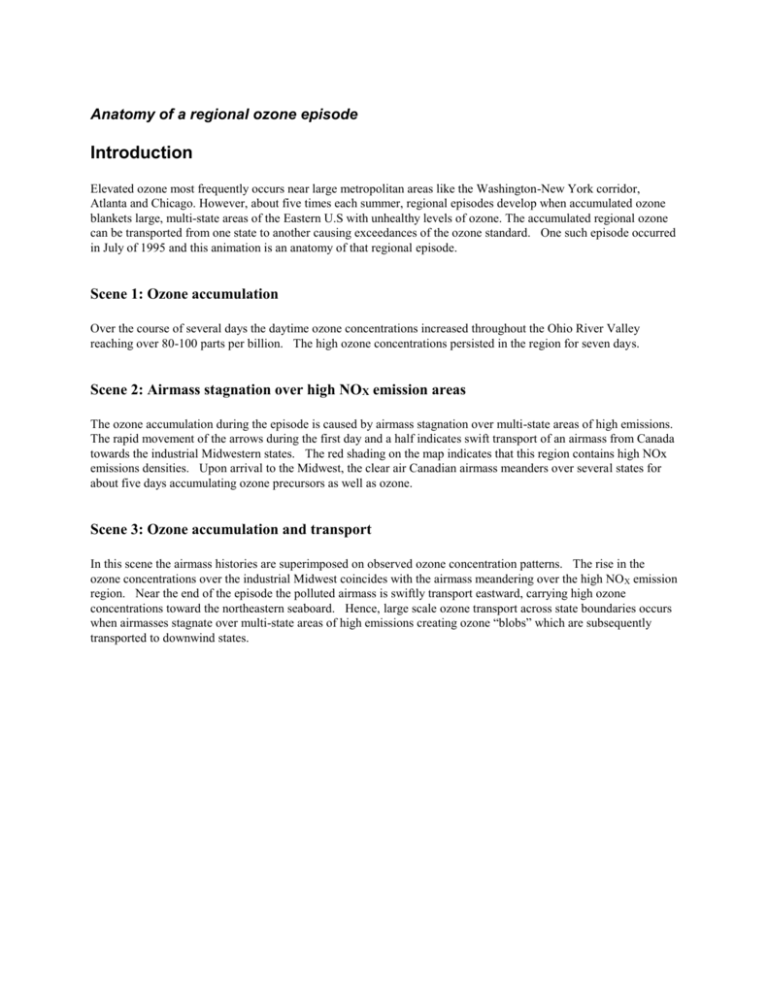Anatomy of a regional ozone episode
advertisement

Anatomy of a regional ozone episode Introduction Elevated ozone most frequently occurs near large metropolitan areas like the Washington-New York corridor, Atlanta and Chicago. However, about five times each summer, regional episodes develop when accumulated ozone blankets large, multi-state areas of the Eastern U.S with unhealthy levels of ozone. The accumulated regional ozone can be transported from one state to another causing exceedances of the ozone standard. One such episode occurred in July of 1995 and this animation is an anatomy of that regional episode. Scene 1: Ozone accumulation Over the course of several days the daytime ozone concentrations increased throughout the Ohio River Valley reaching over 80-100 parts per billion. The high ozone concentrations persisted in the region for seven days. Scene 2: Airmass stagnation over high NOX emission areas The ozone accumulation during the episode is caused by airmass stagnation over multi-state areas of high emissions. The rapid movement of the arrows during the first day and a half indicates swift transport of an airmass from Canada towards the industrial Midwestern states. The red shading on the map indicates that this region contains high NOx emissions densities. Upon arrival to the Midwest, the clear air Canadian airmass meanders over several states for about five days accumulating ozone precursors as well as ozone. Scene 3: Ozone accumulation and transport In this scene the airmass histories are superimposed on observed ozone concentration patterns. The rise in the ozone concentrations over the industrial Midwest coincides with the airmass meandering over the high NO X emission region. Near the end of the episode the polluted airmass is swiftly transport eastward, carrying high ozone concentrations toward the northeastern seaboard. Hence, large scale ozone transport across state boundaries occurs when airmasses stagnate over multi-state areas of high emissions creating ozone “blobs” which are subsequently transported to downwind states.






